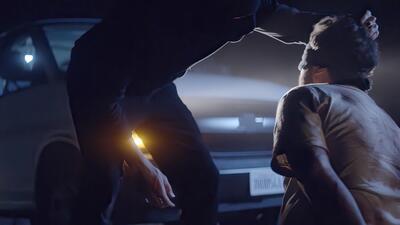
There’s a similar “did you hear that crazy podcast” angle to Jeremy Workman’s “Secret Mall Apartment,” a documentary about a group of Rhode Island creatives who literally built an apartment in the Providence Place Mall in the early 2000s. After discovering space between two of the buildings in the massive structure, these artists decided to try and literally live there, bringing in cinder blocks to wall it off from prying eyes, furniture to sit on, and even a gaming system. They would hang out, go down to the food court to grab leftovers that were being thrown away, and spent a lot of time trying to upgrade their unique situation. Hidden in a massive structure that was seen as evidence of gentrification in Providence was basically an artistic co-op—creative passion living like a barnacle on the ship of capitalism.
While one of the leaders of the Secret Mall Apartment was caught and exposed, most of the other residents hadn’t come forward before Workman’s film. The timing of it feels perfect as these now-older artists revisit a formative chapter in their lives, speaking about its difficulties and rewards. Workman allows for a few diversions that deepen our relationship to these people, including a fascinating tape art project. The whole thing sometimes feels a bit underdeveloped thematically, but it definitely conveys that the existence of the Secret Mall Apartment led to the kind of environment where creatives inspire other creatives to be their best selves. Yes, they were essentially stealing real estate, but don’t corporations do that every day to a much lesser end than creative expression?
To be clear, I don’t think artists should go breaking into malls looking for places to live, and I think it’s something that would be a lot harder to pull off in today’s land of cameras and motion detectors. However, I also do stumble on TikToks all the time about people investigating run down malls, a relic of a time gone by. The truth is that artistic communities like this one still thrive across the country and will for generations to come. You can’t say the same thing about the mall.

Finally, there’s “She Looks Like Me,” a film with a truly remarkable true story that’s admirably respectful and even idolizing of its subjects even if it loses focus a bit too often over its long runtime. The two figures at the center of “She Looks Like Me” are models of strength, in character and physically. And there’s an interesting but slightly underdeveloped theme here about the importance of parental support for a young person, especially one with different needs. But “She Looks Like Me” ultimately would have worked at half its length, a version that homes in a little tighter on its messages instead of cutting back and forth between them.

